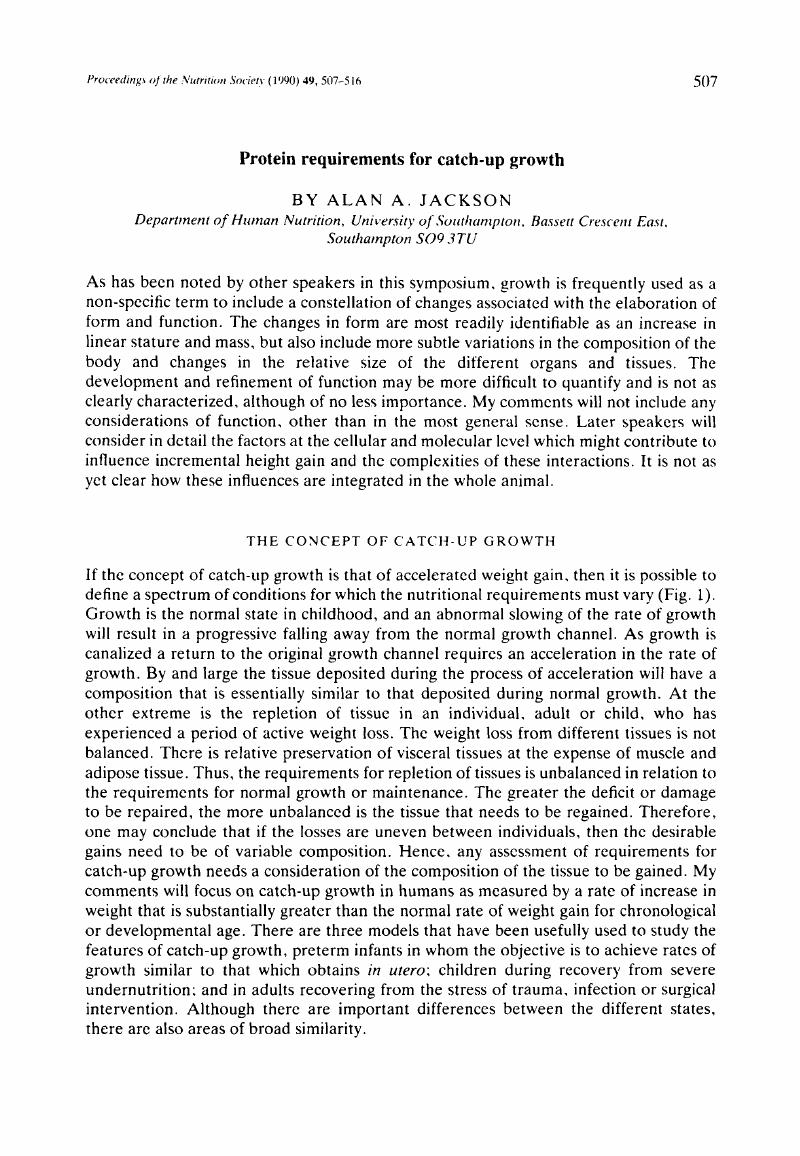Crossref Citations
This article has been cited by the following publications. This list is generated based on data provided by Crossref.
Jackson, Alan A.
Doherty, J.
de Benoist, M.-H.
Hibbert, J.
and
Persaud, C.
1990.
The effect of the level of dietary protein, carbohydrate and fat on urea kinetics in young children during rapid catch-up weight gain.
British Journal of Nutrition,
Vol. 64,
Issue. 2,
p.
371.
Waterlow, J. C.
1990.
Protein Requirements of Infants: an Operational Assessment.
Proceedings of the Nutrition Society,
Vol. 49,
Issue. 3,
p.
499.
Doherty, J
and
Jackson, Alan A
1992.
The effect of dietary pectin on rapid catch‐up weight gain and urea kinetics in children recovering from severe undernutrition.
Acta Paediatrica,
Vol. 81,
Issue. 6-7,
p.
514.
Torres, A
Orav, J
Willett, W
and
Chen, L
1994.
Association between protein intake and 1-y weight and height gains in Bangladeshi children aged 3–11 y.
The American Journal of Clinical Nutrition,
Vol. 60,
Issue. 3,
p.
448.
Hoare, Simon
Poppitt, Sally D.
Prentice, Andrew M.
and
Weaver, Lawrence T.
1996.
Dietary supplementation and rapid catch-up growth after acute diarrhoea in childhood.
British Journal of Nutrition,
Vol. 76,
Issue. 4,
p.
479.
Murphy, Mary E.
1996.
Avian Energetics and Nutritional Ecology.
p.
31.
Eastwood, Martin
1997.
Principles of Human Nutrition.
p.
485.
Gurven, Michael
Allen-Arave, Wesley
Hill, Kim
and
Hurtado, Magdalena
2000.
“It's a Wonderful Life”.
Evolution and Human Behavior,
Vol. 21,
Issue. 4,
p.
263.
Smith, Zofia
2001.
Clinical Paediatric Dietetics.
p.
423.
Roche, Alex F.
and
Sun, Shumei S.
2003.
Human Growth.
Lawson, M.
2005.
Encyclopedia of Human Nutrition.
p.
357.
Clarke, S. E.
Evans, S.
MacDonald, A.
Davies, P.
and
Booth, I. W.
2007.
Randomized comparison of a nutrient‐dense formula with an energy‐supplemented formula for infants with faltering growth.
Journal of Human Nutrition and Dietetics,
Vol. 20,
Issue. 4,
p.
329.
Cooke, Richard J
and
Griffin, Ian
2009.
Altered body composition in preterm infants at hospital discharge.
Acta Paediatrica,
Vol. 98,
Issue. 8,
p.
1269.
Cooke, R J
2010.
Catch-up growth: implications for the preterm and term infant.
European Journal of Clinical Nutrition,
Vol. 64,
Issue. S1,
p.
S8.
Cooke, Richard J
Griffin, Ian J
and
McCormick, Kenny
2010.
Adiposity Is Not Altered in Preterm Infants Fed With a Nutrient-Enriched Formula After Hospital Discharge.
Pediatric Research,
Vol. 67,
Issue. 6,
p.
660.
Badaloo, Asha
Hsu, Jean W.-C.
Taylor-Bryan, Carolyn
Reid, Marvin
Forrester, Terrence
and
Jahoor, Farook
2010.
Tyrosine requirement during the rapid catch-up growth phase of recovery from severe childhood undernutrition.
British Journal of Nutrition,
Vol. 104,
Issue. 8,
p.
1174.
Soliman, Ashraf T.
and
ElAwwa, Ahmad
2012.
Handbook of Growth and Growth Monitoring in Health and Disease.
p.
935.
Cooke, Richard J.
2012.
Neonatology.
p.
320.
Briend, André
and
Berkley, James A
2016.
Long term health status of children recovering from severe acute malnutrition.
The Lancet Global Health,
Vol. 4,
Issue. 9,
p.
e590.
Cooke, Richard J.
2016.
Neonatology.
p.
1.



